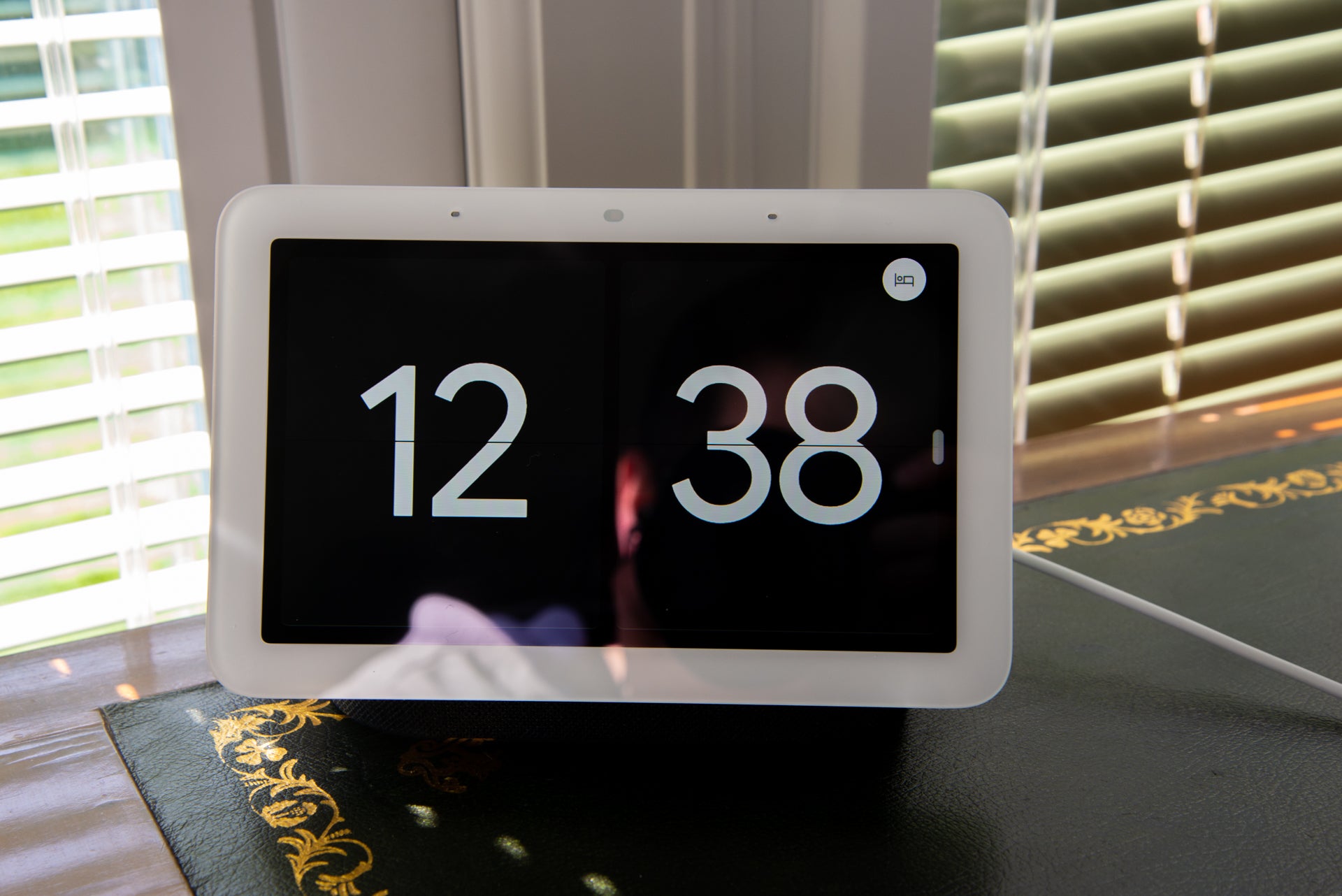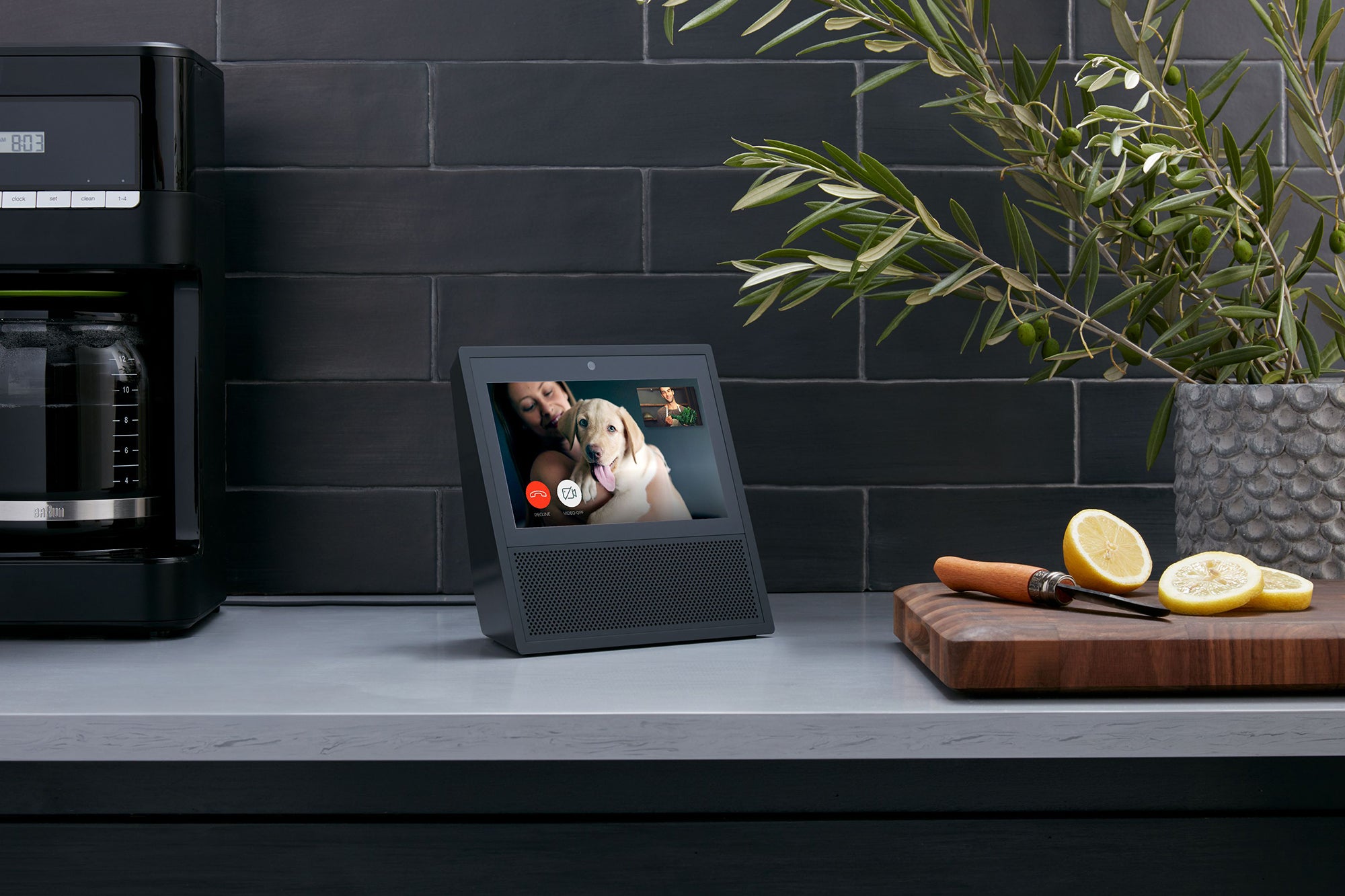Amazon Echo Show 15 vs Echo Show 10
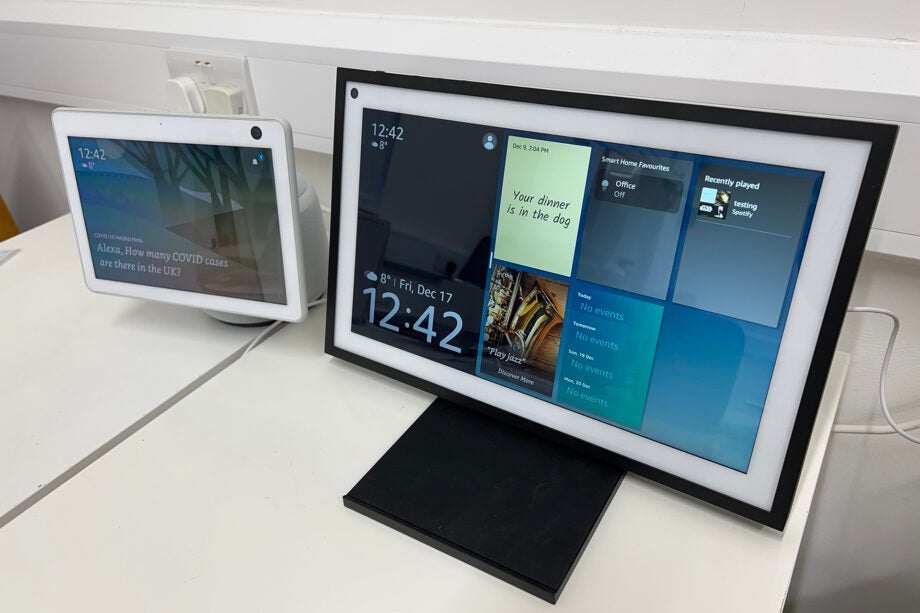
With its rapidly expanding range of smart displays, there’s now a massive choice of Echo Show devices to choose from, including two high-end models. Here, I’ll pit the Amazon Echo Show 15 vs Echo Show 10 (3rd Generation), both of which cost the same, to help you find the right model for your needs.
Design
Previously all Echo Show devices have been similar, bar screen size. That is, they were all smart displays that could stand up by themselves. Both of these products vary from this standard a little.
While the Echo Show 10 still stands on a desk, it’s no longer a wedge-shape, with a round base that looks like a subwoofer. This is actually a motorised stand, and the screen can turn a full 360-degrees, allowing the tablet to turn to face you. This design takes up a little more desk space than the previous-generation Echo Show 10 did. You can buy the Echo Show 10 in both charcoal and white.
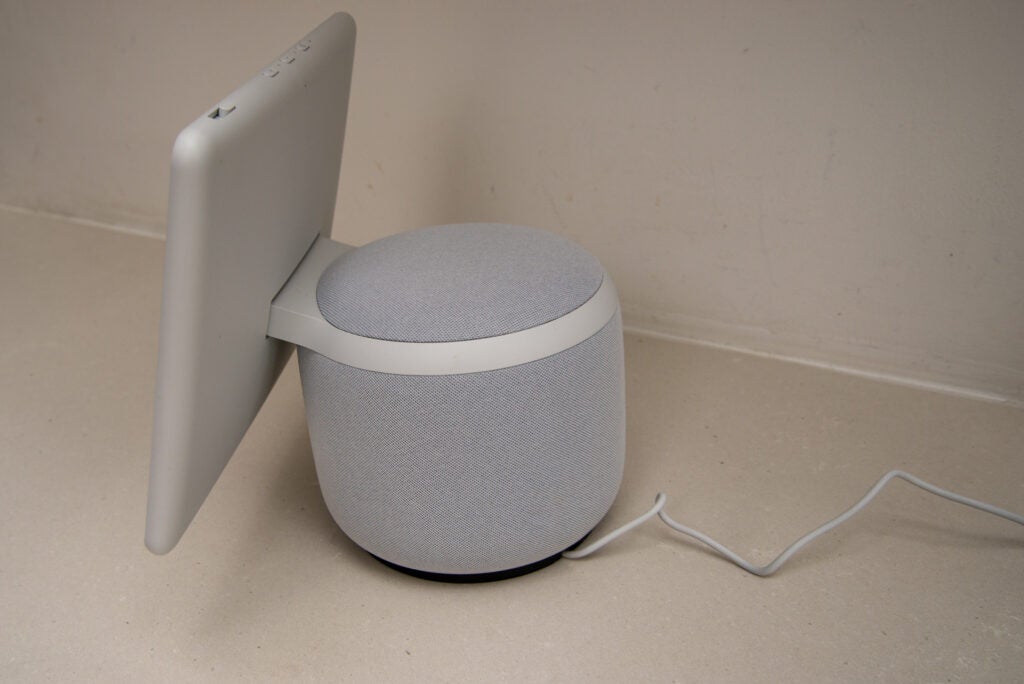
As you can tell from the name, this device has a 10.1-inch display, which was previously the largest you could get in an Echo Show.
The Echo Show 15 is the new big-screen device, with a 15.6-inch display. It’s mounted inside a much thinner case (just 35mm thick), with the smart display looking more like a photo frame than a traditional smart speaker. Indeed, this smart display is designed to be hung on a wall and comes with the mounting bracket in the box.
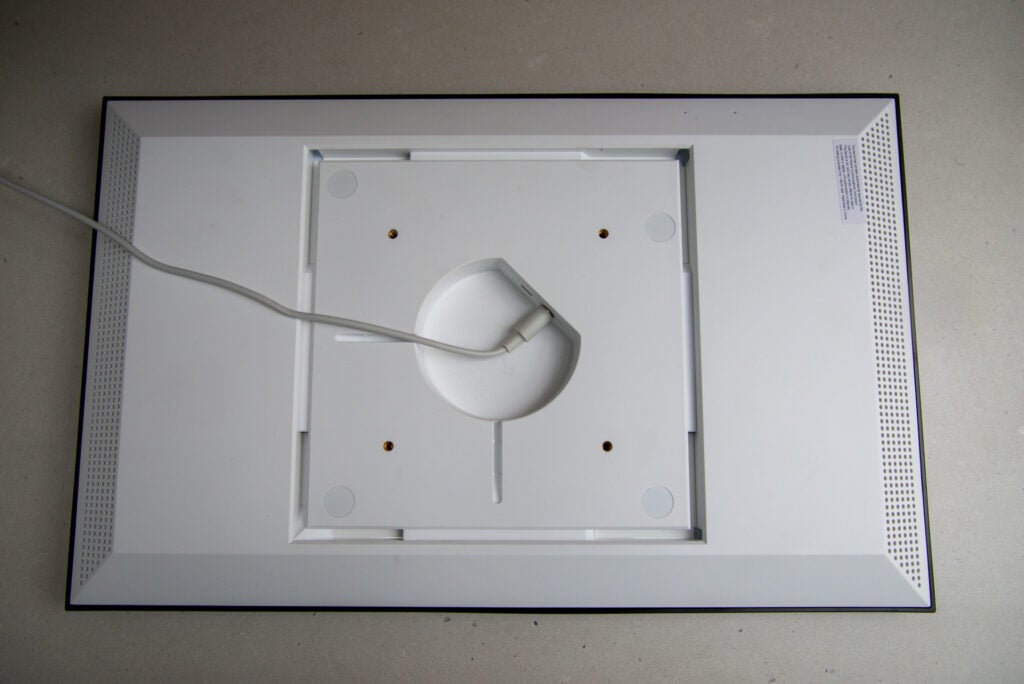
If you do want to put the Echo Show 15 on a desk, then you’ll need to buy the optional tilt stand (another £29.99). Of course, it takes up a lot more space than the other Echo Show models. You can only buy the Echo Show 15 in the one colour.
Features
As both smart displays use Amazon Alexa, they have the same core features. That is, Alexa can answer questions and control your smart devices when you speak to it. Both smart displays have touch controls, too. For example, ask Alexa to turn on a light and you’ll get the option to adjust brightness on screen.
So far, the experience is the same, but there are some key differences in the ways that the products work. The Echo Show 15 has a brand new interface, which uses Widgets to show snippets of information on-screen, such as sticky notes, a calendar overview or your favourite smart home devices.
While the range of widgets is a little limited at the moment, new ones will be available from both Amazon and third party developes. I really like the new interface and seeing more on-screen is a definite bonus. Widgets will only be available on the Echo Show 15, because the other models don’t have a large enough screen.
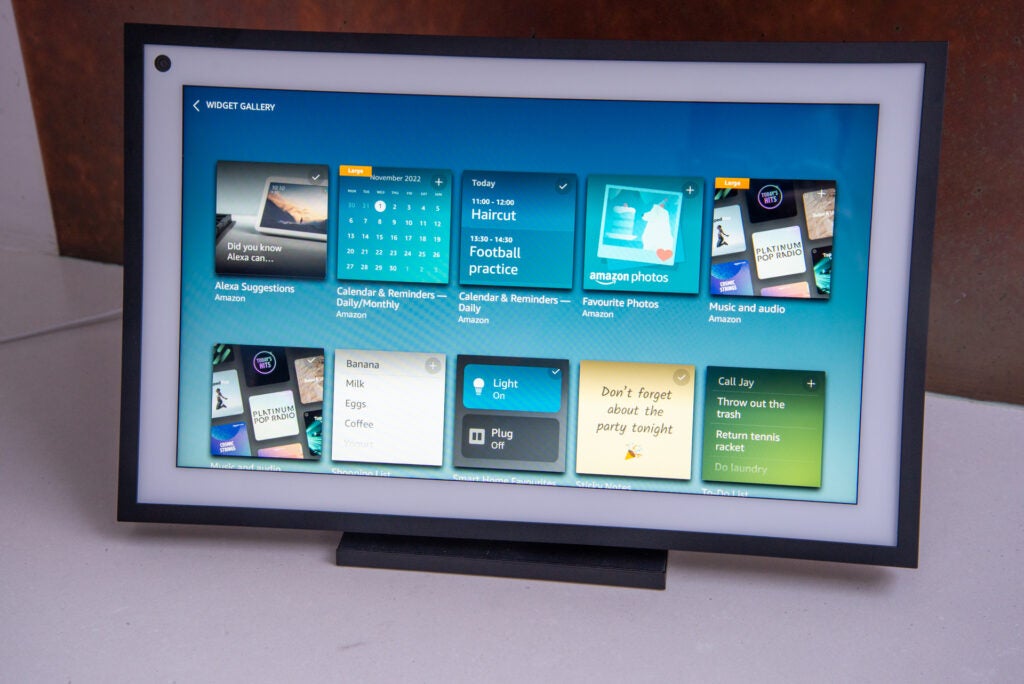
You can also place the Echo Show 15 in portrait mode: the only Echo Show that can do this. It’s quite cool and works well, although this does make watching video impractical.

With Visual ID, the Echo Show 15 can spot registered users, displaying personal information, such as private calendar entries (by default, the device shows a shared family calendar). This feature is rolling out to the Echo Show 10, too.
The Echo Show 10 has its fancy moving stand. Talk to Alexa, and the screen will move to face you; make a video call, and the display will move to keep you focussed. It might sound like a gimmick, but it’s a great tool, particularly in rooms where you move around a lot, such as a kitchen.
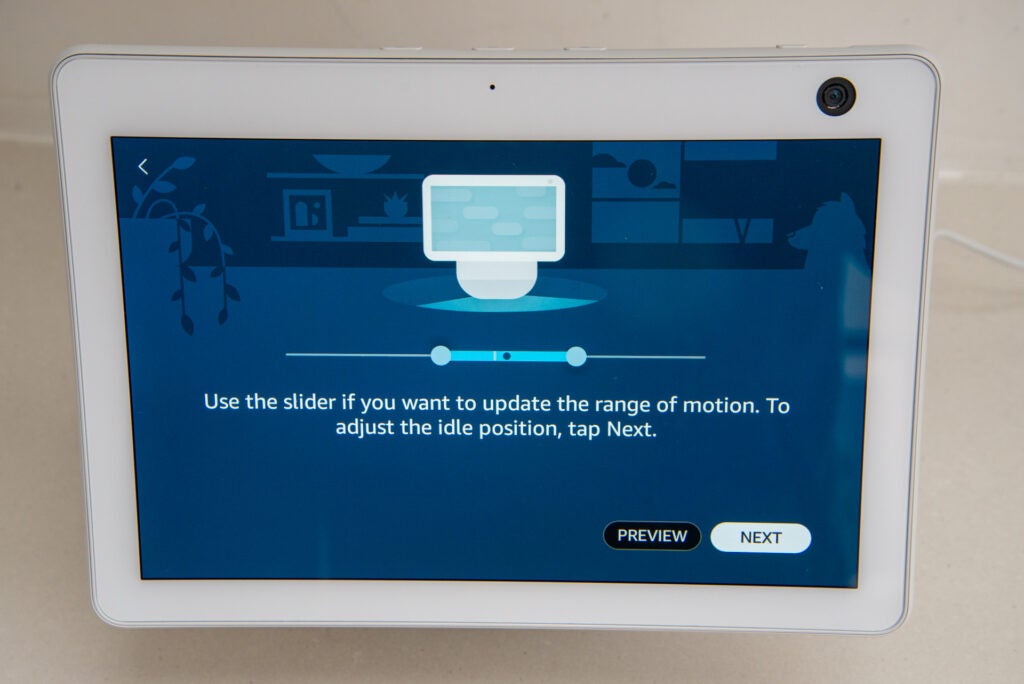
The Echo Show 10 trumps the 15 with its webcam: a 13MP device. This shoots better video, and helps the Echo Show 10 zoom in and track you during video calls. You can live view the camera and move the Echo Show 10 around as well.
With its 5MP camera, the Echo Show 15 is a bit more old school when it comes to video. You can live-view the camera from the Alexa app, but you’re limited to the fixed view the display provides.
Video quality
With the option to watch Netflix and Amazon Prime natively (and YouTube via the clunky web browser), both devices are there for entertainment. I find the Echo Show 10 and its 1280 x 800 screen) fine for occasional viewing at a desk, particularly for shows that I don’t need to concentrate too much on.
It’s the Echo Show 15 that has the advantage, with a larger screen and higher resolution of 1920 x 1080. Watching on this device is far more engaging and the display can replace a TV, to a certain degree, in a smaller kitchen. However, neither device gives you live TV and the range of services is quite limited, so don’t throw away your old TV or streaming stick just yet.
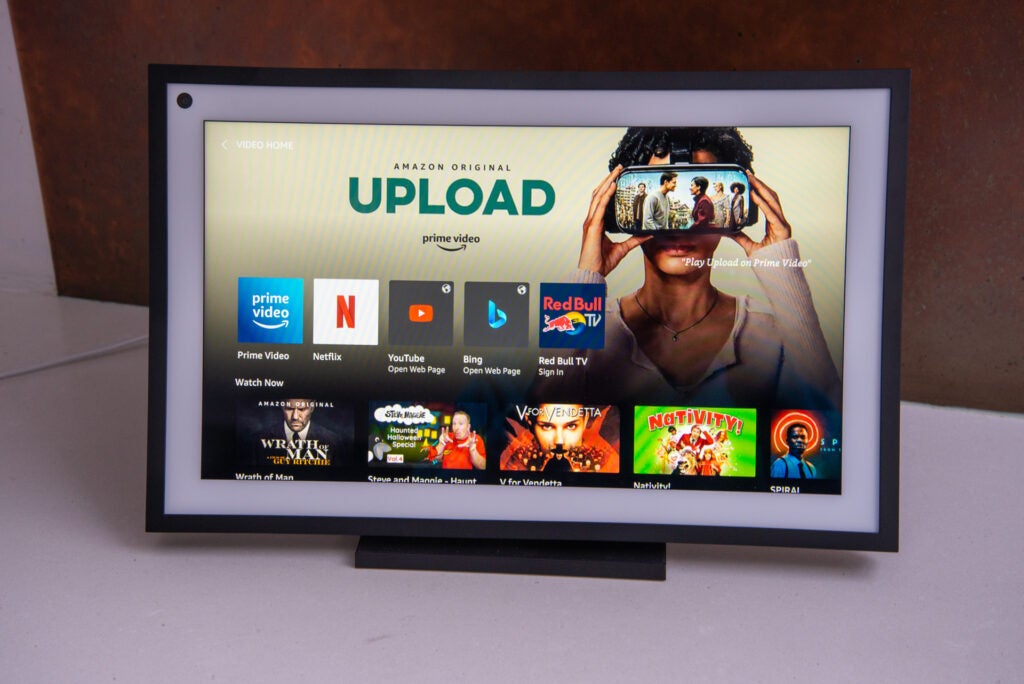
Audio quality
The Echo Show 15 has two 1.6-inch full-range drivers and that’s it. With the thin case, audio quality is fine for a bit of video watching and voice replies, but music really lacks impact and the audio is a touch muddled. That feels like a slight step backwards for Echo Show devices.
No such complaints with the Echo Show 10. With twin 1-inch tweeters and a 3-inch woofer, this model is arguably the best-sounding Amazon Echo speaker. It sounds great for music, with real impact, and improves movies and TV shows that you stream to the screen.
Amazon Echo Show 15 vs Echo Show 10 verdict
While I love the new interface for the Echo Show 15 and having the option to wall mount can be handy, audio quality is a step back and the new design won’t suit everyone. If you’ve got counter or desk space, then the Echo Show 10 is a better overall product thanks to its better webcam and audio. It just lags behind in screen resolution, but for most uses this won’t matter too much.


